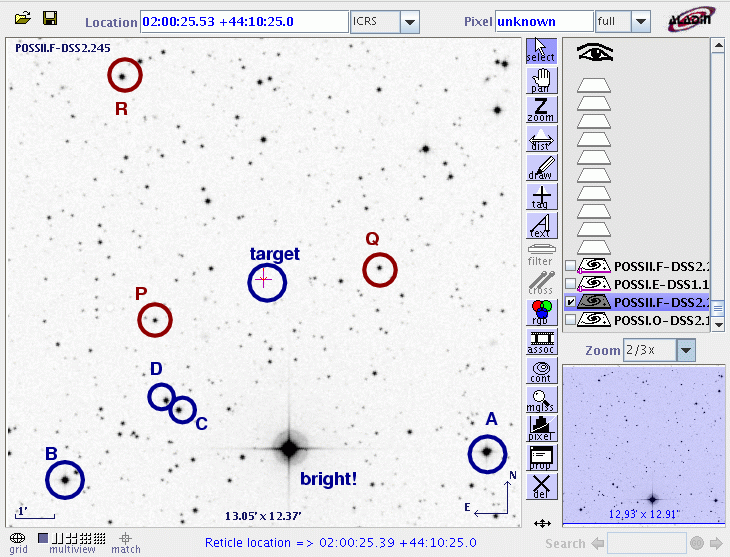
On the night of September 18/19, 2008, RIT grad students Fabio Antonini, Marcelo Ponce and I observed a new object which was recently discovered in the constellation Andromeda. The name of this variable has now been set to V466 And. It's still very early, but you can find a bit of information on the new object in these sources:
The setup was:
Notes from the night
This is a chart of the field taken from the DSS.

The chart has several of the brighter stars in thefield labelled with letters, just to keep me straight as I perform the reductions. The star labelled "bright!" saturates my detector. Stars A and B are in the Tycho-2 catalog,
my
label RA Dec Bt Vt
----------------------------------------------------------------------------
A TYC 2828 1694 1 29.97369 +44.10297 12.081 11.143
B TYC 2841 810 1 30.22008 +44.08782 13.369 11.679
These stars appear in AAVSO VSP chart V
--------------------------------------------------
P 14.2
Q 14.1
R 13.0
----------------------------------------------------------------------------
On this night, star A was saturated as the field rose high above the horizon and I re-focused. Therefore, I don't include A as a reference in the ensemble, though I do show its measurements in the graphs below.
I measured the instrumental magnitude of each star with aperture photometry, using a radius of 3 pixels = 5.6 arcseconds and sky defined by an annulus around each star. Following the procedures outlined by Kent Honeycutt's article on inhomogeneous ensemble photometry, I used all stars available in each image to define a reference frame, and measured each star against this frame.
One output of the ensemble solution is the value of the zero-point of each frame relative to the others. In the graph below, I plot this zero-point as a function of time. The many high points are due to trailed images.
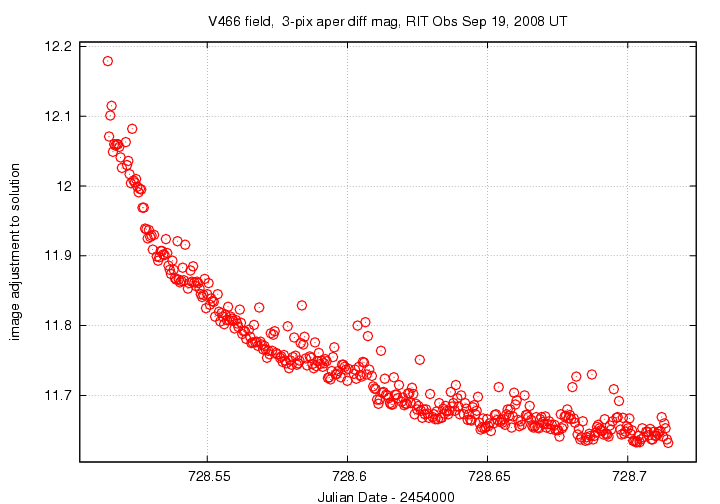
Below is a graph of the scatter in differential magnitude versus magnitude in the ensemble solution. The only good bright reference star is the one marked "B" in the chart above, which appears at differential magnitude 0.7. The star with elevated scatter, "A" at differential mag 0.0, is not included in the solution as a reference star.
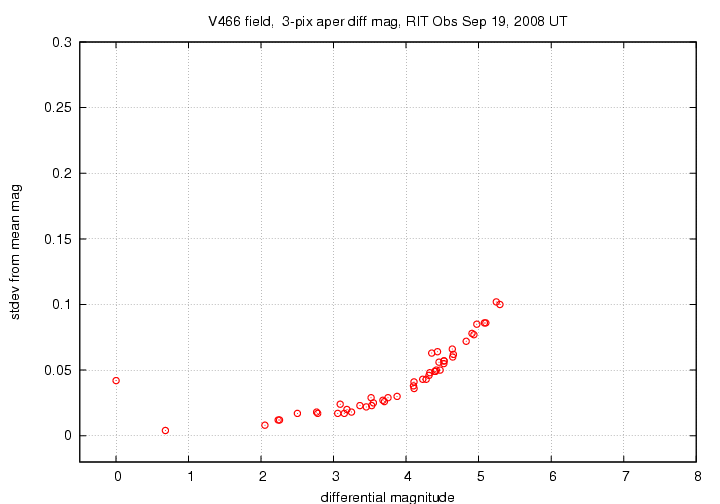
The floor of this diagram corresponds to a scatter of about 0.004 mag. V466 And appears at differential magnitude 4.4; its scatter of 0.064 mag is a bit higher than that of stars of similar brightness.
Light curves for selected stars (V466 And and stars A - D, P, Q) in the field are shown below. V466 And is shown by light green crosses.
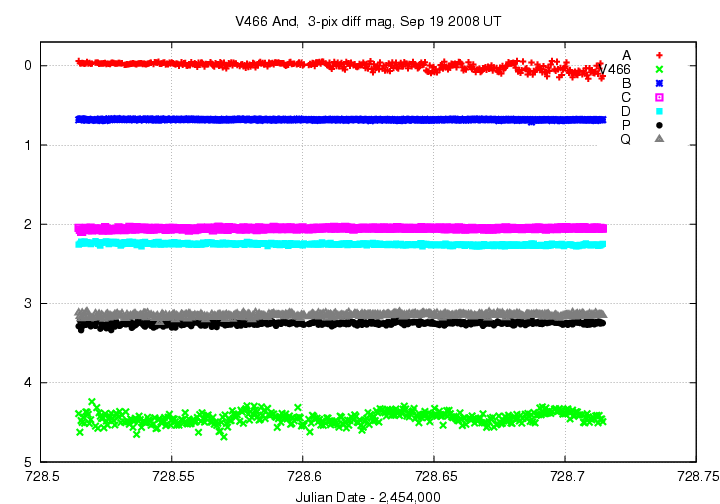
Here's a closeup of the variation in Nova And 2008 and a few comparison stars. There is a small gap at time JD 728.601 due to three images in which the target drifted over a bad pixel at (130, 220) on the chip. Rats.

Look at its behavior relative to other stars in the field over the period of our measurements:
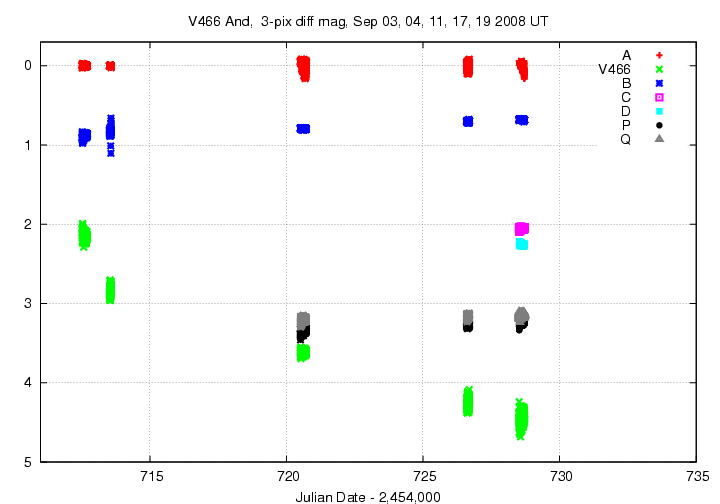
I've made a table of the measurements themselves, with three different flavors of time. The differential magnitudes from the ensemble solution have been shifted so that star "B" in my chart, TYC 2841-810-1, has value 11.679. Remember these are unfiltered measurements.
Here's the start of the table.
# Measurements of V466_And made at RIT Obs, Sep 19, 2008 UT. # by Michael Richmond, Marcelo Ponce, Fabio Antonini under good conditions. # Each exposure 30 seconds long with no filter. # Tabulated times are midexposure (FITS header time - half exposure length) # and accurate only to +/- 1 second (??). # 'mag' is a differential magnitude based on ensemble photometry # using a circular aperture of radius 5.6 arcseconds. # which has been shifted so TYC 2841-810-1 mag=11.679 # to match Vt value in Tycho-2 catalog. # # UT day JD-2,450,000 HJD-2,450,000 mag uncert Sep19.01453 2454728.51453 2454728.50951 15.389 0.051 Sep19.01498 2454728.51498 2454728.50996 15.623 0.061 Sep19.01543 2454728.51543 2454728.51041 15.475 0.053
Last modified 9/19/2008 by MWR.